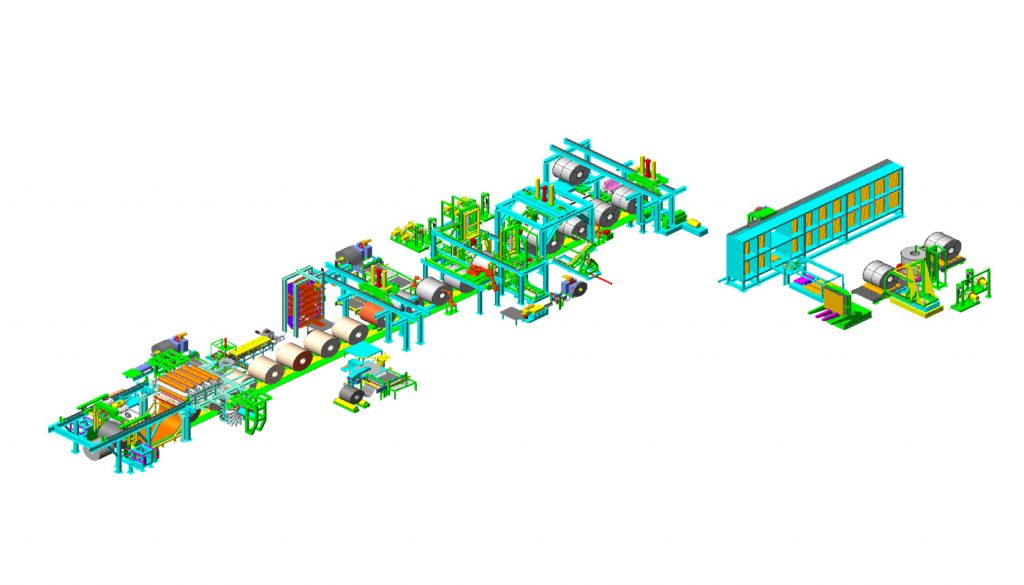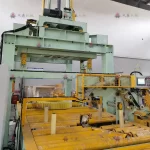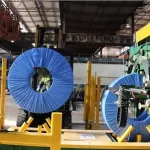How to Implement Eco-Friendly Practices in Steel Coil Packaging

Sustainability is no longer just a trend—it’s a necessity. Industries across the globe are facing increasing pressure to reduce their environmental impact, and the steel coil packaging sector is no exception. Eco-friendly practices are now a top priority for many companies seeking to align with global standards and meet consumer expectations. In this article, we’ll explore how to implement eco-friendly practices in steel coil packaging and why this shift is crucial for your business. From material selection to energy efficiency, adopting greener practices can significantly reduce your environmental footprint.
1. The Importance of Sustainability in Steel Coil Packaging
Before diving into actionable steps, let’s understand why sustainability is essential in steel coil packaging. The steel industry is one of the most resource-intensive sectors, contributing significantly to carbon emissions and waste. While efforts have been made to reduce emissions during production, packaging often remains an overlooked aspect of the process.
Packaging waste, particularly plastic and other non-recyclable materials, contributes to landfill overflow and pollution. By implementing eco-friendly packaging, companies can reduce their environmental impact, improve their brand image, and meet regulatory requirements aimed at sustainability. Moreover, consumers and stakeholders are increasingly favoring businesses that prioritize green practices, making this shift beneficial for your bottom line as well.
2. Choosing Sustainable Packaging Materials
One of the most effective ways to reduce the environmental impact of steel coil packaging is by selecting sustainable materials. Conventional packaging materials such as plastic wraps, tapes, and non-recyclable foams are harmful to the environment. Shifting to eco-friendly alternatives is a significant first step.
Recycled materials are an excellent option. Using materials that have already been through the recycling process helps minimize waste. Biodegradable options, such as plant-based wraps, are also gaining popularity. These materials decompose naturally and reduce the amount of waste that ends up in landfills.
Another option is the use of reusable packaging solutions. Reusing durable packaging materials like steel pallets and sturdy wraps can cut down on the need for single-use items, thus reducing the overall waste produced by your operations.
3. Minimizing Material Waste
While choosing sustainable materials is crucial, it’s equally important to focus on minimizing material waste during the packaging process. Over-packaging is a common issue that not only increases costs but also contributes to environmental harm. By carefully analyzing your packaging needs, you can optimize the amount of material used without compromising on protection or safety.
Consider custom-sized packaging tailored to fit each steel coil. This reduces the excess material used for standard-size packaging that may not be necessary. Advanced packaging machines can be programmed to use the exact amount of material required, reducing waste.
Additionally, implementing a closed-loop recycling system within your packaging operations can further reduce waste. This involves collecting and recycling packaging materials used in-house, which can then be reused in future shipments.

Get Your Best Solution !
4. Energy-Efficient Packaging Machines
Reducing the carbon footprint of your packaging operations isn’t just about materials—energy consumption plays a vital role as well. Packaging machines that require excessive energy to operate contribute to greenhouse gas emissions, and this can offset any sustainability efforts you are making with materials.
Investing in energy-efficient packaging machines is a practical solution. These machines use less electricity and operate with greater efficiency, minimizing waste in the production process. For example, automated steel coil wrapping machines with energy-saving features can significantly lower your operational energy consumption.
Additionally, implementing smart technology that monitors energy use and optimizes machine performance can further enhance sustainability. Real-time energy monitoring tools help identify inefficiencies and reduce unnecessary energy consumption during packaging operations.
5. Adopting Circular Economy Principles
Another way to implement eco-friendly practices in steel coil packaging is by adopting circular economy principles. A circular economy is a model designed to reduce waste, reuse materials, and extend the lifecycle of products. This is particularly relevant in the packaging industry, where single-use materials dominate.
Incorporating recyclable packaging into your processes is just one aspect of this. You can also work toward designing packaging systems that focus on longevity, allowing materials to be reused multiple times before they need to be discarded. For instance, using high-quality steel pallets for transport that can be recycled after years of use fits into the circular economy model.
Collaborating with suppliers who adhere to these principles can also help ensure your entire supply chain is more sustainable. Engaging in partnerships with green-certified vendors and ensuring they use recyclable materials will further reduce your overall environmental impact.
6. Employee Training and Awareness
No eco-friendly initiative can succeed without the involvement of your workforce. Ensuring that your employees are well-trained and aware of the importance of sustainable practices is key to implementing them effectively. Regular training sessions on waste management, material optimization, and energy-saving measures can significantly improve your packaging process.
Encourage a culture of sustainability by rewarding employees who actively participate in green initiatives. Small efforts like reducing waste, recycling materials, and using packaging machines efficiently can add up to substantial results when practiced consistently across your workforce.
Furthermore, employee engagement programs can highlight innovative ideas for reducing environmental impact. Workers on the factory floor often have insights into operational inefficiencies and potential areas for improvement. Harnessing their expertise can lead to valuable changes in your packaging operations.
7. Tracking and Reporting Sustainability Efforts
To ensure that your eco-friendly practices are effective, it’s essential to track and report your sustainability efforts. Having clear metrics in place allows you to monitor progress, identify areas for improvement, and showcase your achievements to stakeholders.
Start by establishing key performance indicators (KPIs) related to packaging sustainability. These might include reductions in material usage, energy consumption, and waste generation. Regularly review these KPIs to ensure your practices are having the desired impact.
Many companies also choose to produce sustainability reports, which detail their environmental efforts and outcomes. These reports not only serve as a valuable internal tool but also help demonstrate your commitment to sustainability to customers and business partners. Transparent reporting on your green initiatives can enhance your brand’s reputation and drive customer loyalty.
Conclusion
Implementing eco-friendly practices in steel coil packaging is a vital step toward reducing your environmental impact and improving operational efficiency. By selecting sustainable materials, minimizing waste, investing in energy-efficient machines, and adhering to circular economy principles, you can make a significant difference. Additionally, empowering your workforce and consistently tracking your sustainability efforts will ensure long-term success. As businesses across the globe continue to embrace greener practices, adopting these measures will not only benefit the environment but also enhance your brand’s reputation and bottom line.
By focusing on sustainable packaging practices, your company can stay ahead of regulatory changes, meet customer demands for eco-friendly products, and contribute positively to the global effort to reduce environmental impact. Now is the time to integrate these green practices into your steel coil packaging operations for a more sustainable future.

Get Your Best Solution !









